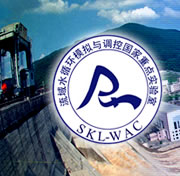A systematic and quantitative approach to improve water use efficiency in agriculture
Theodore C. Hsiao ,Pasquale Steduto, Elias Fereres
Abstract :As the competition for the finite water resources on earth increases due to growth in population and affluence, agriculture is faced with intensifying pressure to improve the efficiency of water used for food production. The causes for the relatively low water use efficiency in agriculture are numerous and complex, including environmental, biological, engineering, management, social, and economic facets. The complexity of the problem, with its myriads of local variations, requires a comprehensive conceptual framework of the underlying physical and biological processes as the basis to analyze the existing situation and quantify the efficiencies, and to plan and execute improvements. This paper proposes such a framework, based on the simple fact that the overall efficiency of any process consisting of a chain of sequential step is the product of the efficiency (i.e., output/input ratio) of its individual component steps. In most cases of water use, a number of process chains, both branching and merging, are involved. Means to integrate the diverging and converging chains are developed and presented as equations. Upscaling from fields to regions and beyond are discussed. This chain of efficiencies approach is general and can be applied to any process composed of chains of sequential steps. Here the framework is used to analyze the systems of irrigated and dryland crop production, and animal production on rangeland. Range of plausible efficiencies of each step is presented as tables, with values separately for the poor and for the good situation of circumstances, management and technology. Causes of the differences in efficiency of each step, going from water delivery to soil water extraction, transpiration, photosynthesis, and conversion to crop biomass and yield, and to animal product are briefly discussed. Sample calculations are made to demonstrate how modest differences in the efficiencies of the component steps are manifested as large to huge differences in the overall efficiency. Based on an equation quantifying the impact of changes in efficiency of component steps on the overall efficiency, it is concluded that generally, it is more effective to made modest improvements in several or more steps than to concentrate efforts to improve one or two steps. Hence, improvement efforts should be systematic and not overly concentrated on one or two components. The potential use of the same equation as the point of departure to optimize the allocation of economic resource among the component steps to maximize the improvement in the overall water use efficiency is elaborated on. The chain of efficiencies framework provides the means to examine the current levels of efficiency along the pathways of agricultural water use, to analyze where inefficiencies lie by comparing with the range of known efficiency values in the tables presented, to assess the potential improvements that may be achieved in various parts and their impact on the overall efficiency, and to aid in the optimal allocation of resources for improvements.
《灌溉科学》刊登“一种提高农业水资源利用效率的系统定量方法”
作者:Theodore C. Hsiao,Pasquale Steduto,Elias Fereres
刊登日期:2007年
编目:25期
页码:209-231页
关键词:无
摘要:随着人口和经济的增长,地球上有限水资源的竞争越来越激烈,因此农业面临着提高用水效率的巨大压力。农业用水效率相对较低,其原因是复杂、多方面的,涉及环境、生物、工程、管理、社会和经济等,需要一个综合框架来解决,并以物理和生物机制为基础来分析现状,量化用水效率,同时进行规划,采取改进措施。本文提出了一个框架,其依据是总效率是各部分效率的共同结果。大多数情况下,水资源的使用是由一系列过程组成的,包含分支和融合,将二者联系在一起的方法是建立和提出相关方程。本文讨论了从小区域到整个地区的情况。有关效率的方法是通用的,可以应用到由一系列连续步骤组成的任何过程。本文中,该框架用于分析灌溉、旱地谷物生产和畜牧生产。每一步骤可能产生的效率范围参见图表,表中分别给出了不同环境、管理和技术条件下效率的最大值和最小值。导致效率差别的原因包括供水,土壤水提取,蒸发,光合作用,转化的作物产量和生物量,以及畜产品量等,针对这些分布进行了讨论。通过算例结果显示出各组成步骤中效率的微小变化是如何使总效率产生巨大差异的。以定量分析各组成部分效率变化对总效率变化影响的方程为基础,本研究表明,一般地提高多个步骤的效率比集中力量提高一到两个过程的效率要更高。因此,我们应进行系统化的效率改进而不是集中改进一到两个过程。本文还详细说明了该方程的一个潜在的用途即优化各个过程的经济资源配置,从而使水资源使用的总效率达到最高。这一框架使我们可以明确农业水资源使用现状,通过与图表中效率范围值的对比分析效率较低下的环节,从而评估不同过程能够实现的效率提高潜力,以及它们对总效率的影响,进而优化水资源配置从而提高水资源使用效率。

